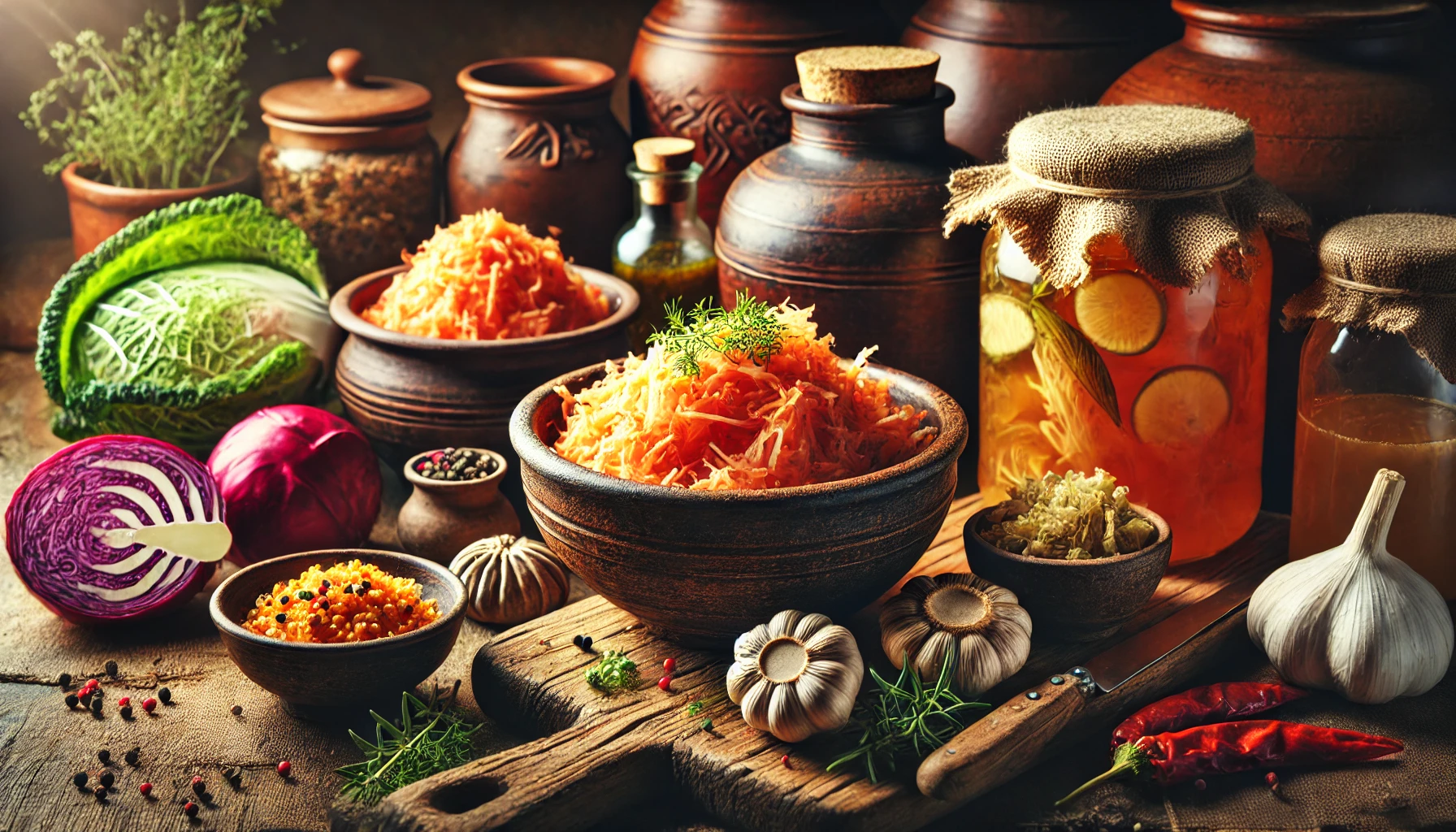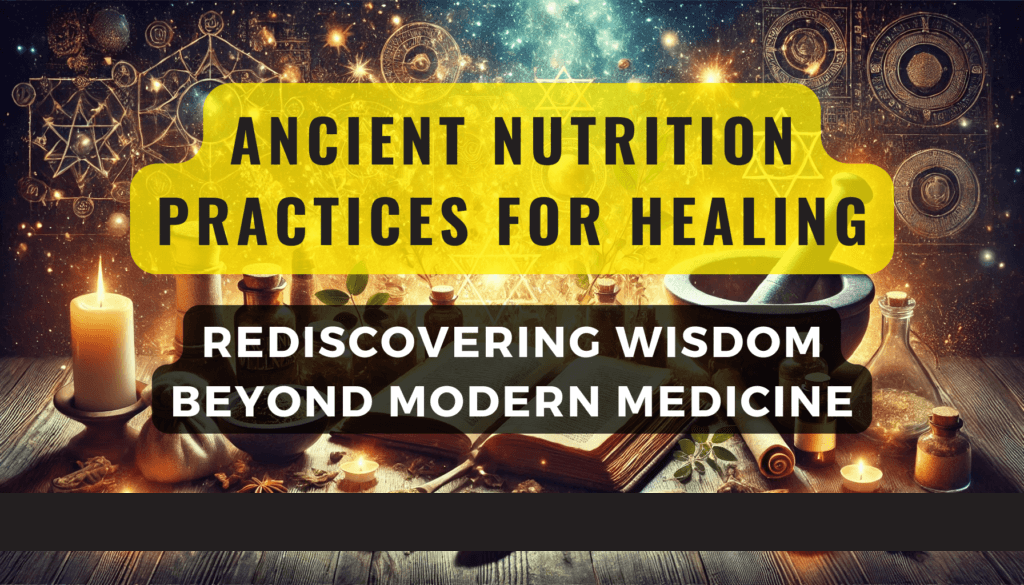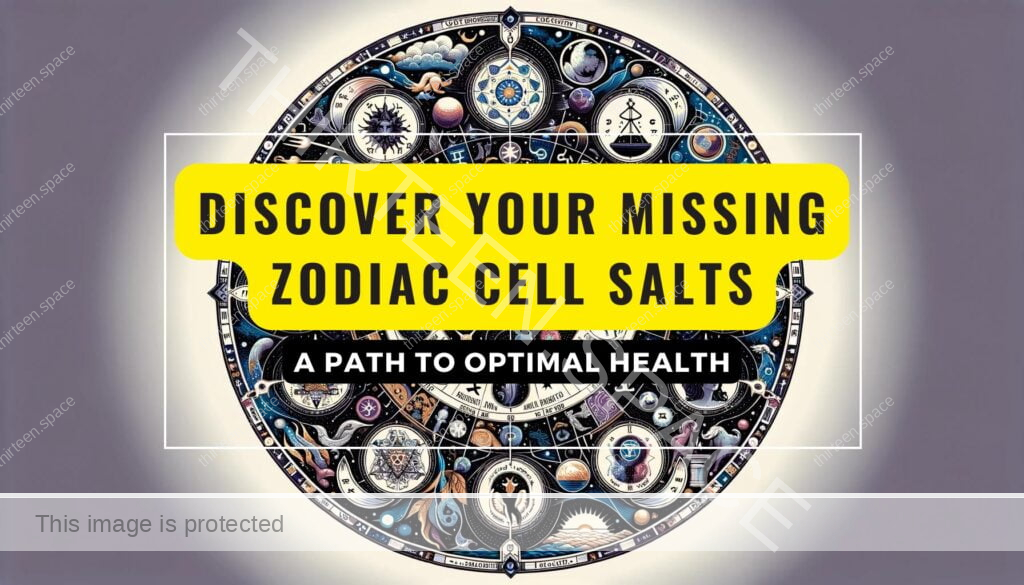Ancient Nutrition Practices for Healing: Rediscovering Wisdom Beyond Modern Medicine
In a world where nutrition often means calorie counts and vitamin labels, the wisdom of ancient nutrition practices offers a refreshing – and necessary – perspective on healing and wellness. Long before modern diets and supplements, ancient cultures approached food as a sacred medicine, believing in its ability to heal not just the body but also the mind and soul. Ancient nutrition practices for healing were deeply rooted in traditions that viewed food as a way to align with the natural rhythms of life. From Ayurveda and Traditional Chinese Medicine to Indigenous knowledge across continents, these practices were designed not only for survival but for holistic health and spiritual balance.
Today, as we grapple with the health consequences of a world increasingly detached from nature and genuine wellness, revisiting these ancient practices is more than a nostalgic nod to the past – it’s a pathway to reclaiming health in the truest sense. Ancient societies understood that the right foods at the right times could strengthen immunity, foster mental clarity, and even cultivate spiritual insight. Whether it’s the seasonal eating that aligns us with nature’s rhythms or the mindful ritual of eating with gratitude, these time-tested principles challenge the fast-food, instant-gratification mindset that dominates our collective psyche.
So why does this matter now? Because the science of ancient nutrition goes beyond the mechanics of macros and micros; it’s an invitation to connect with the body and the world in a deeper, more intentional way. As we peel back the layers of modern food fads, we begin to see the wisdom of holistic nourishment that our ancestors knew intimately. They practiced balance, not just on their plates but in their entire approach to life. The foods they chose and the rituals they honored weren’t just about physical health; they were a rebellion against what we now call the “Agent Smith syndrome” – the zombified state of a society blind to its own needs, trapped in a matrix of convenience and superficiality.
Imagine stepping away from this matrix and reconnecting with ancient healing foods, ones that support not just bodily health but mental clarity and spiritual awakening. These foods and practices are here to help us break free from the confines of modern conditioning, shedding light on the profound interconnectedness of nutrition and self-awareness. Through the ancient lens, nutrition isn’t about deprivation or excess – it’s a form of natural healing that invites us to be curious, open, and alive. In the following sections, we’ll explore the principles and practices that can help us transcend mere nutrition, bringing forth a healing experience that truly transforms mind, body, and spirit.
Ancient Nutrition Practices for Healing: An Overview of Time-Tested Traditions
To understand the power of ancient nutrition practices for healing, we must travel back to a time when food and medicine were not separated by aisles, labels, or certifications. The ancients did not merely eat to sustain themselves; they believed in a symbiotic relationship with nature, one where each meal offered an opportunity for healing, balance, and spiritual alignment. Across cultures, these time-tested nutrition practices developed independently yet share common threads, each grounded in a profound respect for food as a life-giving force, not a commodity.
The Origins of Ancient Healing Foods
The roots of healing foods can be found in some of the world’s oldest systems of medicine. Ayurveda, emerging from ancient India, categorized foods according to their effects on the body’s doshas (energetic forces) and used spices, herbs, and balanced meals to treat ailments, sustain energy, and promote longevity. Ayurveda saw food as inherently medicinal, with the power to harmonize mind, body, and spirit, offering a nutrition philosophy that went beyond physical sustenance.
Meanwhile, Traditional Chinese Medicine (TCM) emphasized a similar holistic approach. TCM’s nutritional practices were focused on yin and yang, the balancing of energies, and how specific foods could restore equilibrium to the body. Chinese practitioners knew that pungent ginger could warm the body and aid digestion, while cooling cucumber could soothe internal heat. Food was carefully chosen and prepared to address the needs of each season, and as with Ayurveda, meals were crafted with the awareness that health extends beyond the physical.
Indigenous practices worldwide also echo this reverence for food as medicine. Native American diets, for example, were designed around the seasons and the land, with each element—from berries to roots—integrated to support holistic health. For them, eating wasn’t just about nourishment; it was a spiritual act, a connection to the earth. Through mindful foraging and seasonal eating, Indigenous peoples achieved a balance of nutrients and energies that supported their physical and spiritual well-being.
Why These Practices Were Rooted in Healing
What makes ancient nutrition practices for healing so compelling today is the fundamental philosophy that health is more than the absence of illness. Ancient practitioners didn’t see nutrition in terms of isolated vitamins or calorie counts; they saw food as an integral part of life’s balance. For the ancients, to eat was to engage in a healing ritual, to consume a “prescription” from the natural world that would foster harmony within. They recognized that a life well-lived was one in which the mind, body, and soul were in sync—and the food they consumed was a primary vehicle to maintain this sync.
This approach stands in stark contrast to modern nutrition, which often views food through the lens of scarcity or abundance: eat less to lose weight, eat more protein to build muscle, avoid this, add that. In ancient nutrition practices, healing was woven into the fabric of daily life, with each meal prepared mindfully to meet the needs of the whole self. Their intuitive understanding of how to eat seasonally, how to combine foods for optimal health, and how to use ingredients that served specific physical or mental needs provided a blueprint for natural wellness that resonates even now.
Ancient nutrition, then, wasn’t just about preventing illness; it was a lifelong practice of attuning oneself to the cycles of nature, nurturing both the physical body and the inner self.
Core Principles of Ancient Nutrition for Healing Mind, Body, and Soul
At the heart of ancient nutrition practices for healing lies a set of core principles that address the entire self: mind, body, and soul. These principles reflect a worldview in which health was seen as an interconnected system rather than a collection of isolated parts. By incorporating elements like balance, seasonal alignment, and mindfulness into eating practices, ancient cultures created nutritional philosophies that healed beyond the physical, nurturing mental clarity and spiritual harmony. Here’s how they did it.
The Concept of Balance and Holistic Nourishment
One of the most profound principles of ancient nutrition is the concept of balance. In Ayurvedic tradition, balance is maintained by aligning one’s diet with the body’s unique dosha – a combination of energy types that govern physical and mental characteristics. Each dosha responds differently to foods, temperatures, and even times of day, which means that nourishment is personalized to fit the individual. This balance wasn’t just dietary; it symbolized a way of living that honors both inner and outer harmony.

Similarly, Traditional Chinese Medicine (TCM) emphasized the balance of yin and yang through food. Yin foods cool and calm the body, while yang foods warm and energize. Foods were selected to counterbalance seasonal and bodily changes, thereby fostering equilibrium. In these systems, healing wasn’t just about feeding the body but also about nurturing the mind and spirit to sustain well-being at all levels.
Seasonal Eating for Natural Alignment
The ancients had an intimate relationship with the natural world, understanding that seasonal cycles affect not only the environment but also the body’s needs. Seasonal eating, a cornerstone of ancient nutrition, was more than a dietary trend; it was a spiritual and practical practice to stay in sync with nature’s rhythms. In winter, for example, people consumed grounding, warming foods like root vegetables and spices to insulate the body and soul. In summer, they embraced cooling fruits and lighter meals to counter the heat.
This seasonal alignment is not only grounding but also healing, supporting the body’s natural processes as they respond to external conditions. Seasonal eating connects us with the cosmic flow, offering a form of nourishment that resonates beyond the physical, harmonizing us with the cycles of life itself. The ritual of eating according to the seasons fosters a deep respect for nature’s wisdom and aligns the eater with the earth’s energies.
Food as Medicine: Ancient Wisdom on Healing Foods
“Let food be thy medicine” is often attributed to Hippocrates, but this ancient wisdom was universally practiced across cultures. Foods were chosen not just for flavor or sustenance but for their healing properties, transforming the act of eating into a daily practice of natural medicine. The spices in Ayurveda – like turmeric for its anti-inflammatory benefits and ginger for digestion – exemplify the use of food as a remedy for physical imbalances. These ingredients served as the building blocks of natural healing, blending seamlessly into the diet to support the body’s resilience.
In TCM, certain foods were prized for their ability to target specific organs or energy channels. Garlic, a pungent “yang” food, was considered vital for immunity and circulation. Ginseng was used as an adaptogen, helping to balance stress and revitalize energy. Each meal became an opportunity for holistic nourishment, intentionally crafted to nurture body, mind, and spirit alike.
The Sacred Ritual of Eating Mindfully
Perhaps one of the most striking aspects of ancient nutrition practices for healing is the reverence with which meals were approached. Eating was not a task but a ritual, a chance to express gratitude and to connect deeply with oneself and one’s surroundings. In many ancient traditions, food preparation and eating were done with a quiet mindfulness, an awareness that the process was as important as the nutrients themselves.
Mindful eating in ancient cultures encouraged people to eat slowly, savoring each bite, and engaging fully with the act of nourishing the body. This mindful approach fosters a profound connection to food and the self, a practice that modern diets often overlook in their rush for efficiency. By eating with intention, the ancients allowed themselves to digest not only the food but also the energy, the gratitude, and the vitality it offered. This ritualistic practice serves as an antidote to the “Agent Smith syndrome” of mindless consumption, a reminder to be present in our choices and conscious in our lives.
In ancient nutrition, these core principles provided a framework for living in tune with oneself and the universe, transforming food from a basic necessity into a powerful tool for healing, growth, and spiritual awakening.
Powerful Ancient Nutrition Practices for Physical and Spiritual Healing
As we dive deeper into ancient nutrition practices for healing, we uncover methods that have stood the test of time, offering not just physical nourishment but spiritual revitalization. These practices, honed over centuries, provided our ancestors with tools to maintain vitality, clarity, and a sense of sacred balance. Each of these techniques is a testament to the power of simple, natural approaches to wellness—practices that many in the modern world are rediscovering for their profound ability to heal the whole self.
Fermented Foods for Gut Health and Immunity
Long before probiotics became a supermarket staple, ancient cultures were crafting their own fermented foods, rich in live bacteria that support gut health and immune resilience. From kimchi in Korea to miso in Japan, from sauerkraut in Europe to kombucha in China, these foods provided essential probiotics that help maintain a healthy microbiome. The gut, often referred to as the “second brain,” is central not only to digestion but to emotional well-being and even mental clarity. In ancient practices, gut health was inseparable from one’s overall vitality, as the ancients intuitively knew that a well-functioning digestive system supported everything from immunity to mood.

By incorporating fermented foods into your diet, you’re not only supporting your physical health but also aligning with an ancient belief in holistic wellness. In essence, fermented foods bridge the gap between physical and mental health, fostering a balance that ancient healers recognized as crucial to the journey toward enlightenment.
Modern research on the benefits of fermented foods confirms what ancient wisdom has long recognized: these foods support gut health, immunity, and even mental well-being.
Herbal Remedies and Adaptogens for Balance and Stress Relief
Ancient nutrition practices for healing also heavily relied on the wisdom of herbal remedies and adaptogens—plants believed to help the body adapt to stress and restore balance. Herbs like ashwagandha, revered in Ayurveda, or ginseng, a staple in Traditional Chinese Medicine, were not only used to address specific ailments but also to support resilience in the face of life’s challenges. Adaptogens like these help stabilize the body’s stress response, calming the nervous system and promoting spiritual healing by nurturing inner peace and clarity.
Beyond just a physical remedy, these herbs are spiritually potent. They serve as allies in the quest for balance, grounding the mind and body to better navigate the ebb and flow of daily life. Integrating adaptogens into your routine can feel like reclaiming a piece of the ancient world—an invitation to move beyond the frenetic pace of modern life and reconnect with a natural state of equilibrium.
Explore the spiritual benefits of ancient herbs and how these timeless remedies can elevate your soul’s journey as part of a holistic healing approach.
Intermittent Fasting and Periodic Fasts for Detoxification and Clarity
Intermittent fasting may seem like a trendy modern practice, but it has roots in nearly every ancient culture. Many traditions recognized the power of fasting, not only as a means of detoxifying the body but as a path to spiritual clarity. Ancient Egyptians, for example, fasted for purification, while Greek philosophers believed that fasting sharpened the mind and opened channels for deeper understanding. In spiritual practices, fasting was often a precursor to revelation, a way to strip away the distractions and create space for higher awareness.
Fasting allows the body to reset, initiating cellular repair processes that support physical health. But beyond the biological benefits, fasting can serve as a powerful ritual to break free from habitual patterns and reset the mind. When we fast, we step away from society’s fixation on constant consumption and reconnect with a rhythm of simplicity—a rare break from the cycle of instant gratification. Ancient fasting was a call to clear not only the digestive system but also the mental clutter, cultivating a profound sense of presence and spiritual awareness.
The Sacred Ritual of Eating Mindfully
In a world that celebrates speed and efficiency, the ancient practice of mindful eating stands as a revolutionary act of presence. Many ancient cultures treated each meal as a ritual, a time to engage fully with food, to express gratitude, and to consume with intention. Mindful eating, a practice that’s rooted in Buddhism, encourages awareness of each bite, a recognition of the energy and life that food offers, and an acknowledgment of the body’s needs.
Eating mindfully isn’t just about slowing down; it’s about breaking free from the “Agent Smith syndrome” of mindless consumption. This practice grounds us, bringing awareness to what we consume and how it makes us feel. By engaging fully in the act of eating, we reconnect with the ancient wisdom that each meal is an opportunity to heal, reflect, and align with our truest selves.
Incorporating these powerful ancient nutrition practices into modern life can help us not only heal physically but also experience profound mental and spiritual shifts, offering a path toward a more balanced, enlightened existence.
Integrating Ancient Nutrition into Modern Life
Bringing ancient nutrition practices for healing into today’s world might seem like a challenge, but it doesn’t require a total lifestyle overhaul. Instead, it’s about making intentional, meaningful changes that honor the ancient wisdom without clashing with the demands of modern life. By thoughtfully integrating these practices, we can tap into timeless principles that foster healing and balance, reconnecting with a way of eating that nourishes the mind, body, and soul.
Step-by-Step Guide to Start with Ancient Nutrition Practices
For those looking to dip their toes into the world of ancient nutrition without feeling overwhelmed, start small. Incorporate one or two ancient practices into your routine and build from there. Here’s a practical approach:
- Begin with Mindful Eating – Set aside distractions during meals. Turn off screens, sit down, and focus on each bite. Mindful eating not only aids digestion but also creates a moment of peace and gratitude, honoring the ancient practice of eating with intention.
- Add Fermented Foods Gradually – Start by incorporating a spoonful of sauerkraut or a glass of kombucha. These foods offer the benefits of probiotics, aiding gut health and supporting the body’s natural resilience, a cornerstone of ancient healing.
- Explore Herbal Remedies – Look into gentle, commonly available adaptogens like ashwagandha or reishi mushroom. They can be taken as teas or powders, easily added to a smoothie or morning coffee.
This gradual introduction helps ease the mind and body into ancient nutrition practices without disrupting your regular routine, allowing the benefits to be felt without overwhelming changes.
Modern Challenges and How to Adapt Ancient Nutrition
While ancient practices were formed in simpler times, modern life comes with its own complexities. Adapting these nutrition practices into the 21st century means navigating around time constraints, limited access to certain ingredients, and a fast-paced culture that often disregards mindfulness. Here’s how to address these challenges:
- Time Constraints: Mindful eating and food preparation don’t require hours in the kitchen. For busy schedules, try dedicating just five minutes of presence to your meal. Embrace slow-cooker recipes or batch-prepared fermented foods like kimchi or yogurt, which require little active time but provide lasting benefits.
- Ingredient Availability: Finding specific ancient ingredients can be tricky, but there are many accessible alternatives. If ashwagandha isn’t available, consider locally available adaptogens like holy basil or even culinary herbs with adaptogenic properties, like rosemary.
- Cultural Resistance: Eating seasonally and locally can be an easy way to overcome skepticism. Seasonal foods are often fresher, more affordable, and better aligned with the body’s needs throughout the year, naturally harmonizing with ancient nutrition principles.
By focusing on the intention behind these practices rather than strict adherence, you can adapt ancient wisdom in a way that feels authentic and manageable.
Resources for Further Learning and Exploration
Curiosity is a guiding principle in the journey toward adopting ancient nutrition practices for healing. To deepen your understanding, consider exploring further:
- Books: Look into titles on Ayurvedic nutrition, Traditional Chinese Medicine, or Indigenous food wisdom. Texts like “The Yoga of Herbs” by Dr. Vasant Lad and David Frawley offer a blend of ancient knowledge and practical advice for incorporating healing foods.
- Courses and Workshops: Many wellness platforms offer online courses in Ayurvedic cooking, herbalism, and fermentation, providing a structured introduction to ancient practices.
- Communities and Local Markets: Connect with local farmers’ markets or community-supported agriculture (CSA) programs, where you can find seasonal, locally grown produce aligned with ancient dietary practices.
Integrating ancient nutrition into modern life is more than a diet; it’s a reawakening of a relationship with food that respects both our bodies and the earth. Each small step toward holistic nourishment brings us closer to breaking free from the conditioning of a world that too often treats food as a mere convenience, helping us rediscover the profound healing power that’s always been within our grasp.
Beyond Physical Health: The Spiritual and Mental Healing Power of Ancient Nutrition
In the realm of ancient nutrition practices for healing, food was never intended to serve only the body. For our ancestors, the act of eating was deeply intertwined with spiritual and mental well-being, offering a form of nourishment that transcended physical health. Ancient cultures intuitively understood that certain foods and eating practices could influence mental clarity, emotional resilience, and even one’s connection to the cosmos. In essence, food was a bridge, a sacred conduit between the earthly and the divine, allowing individuals to cultivate a balanced mind, an open heart, and a grounded spirit.
The Mind-Body-Soul Connection in Ancient Nutrition
One of the most remarkable aspects of ancient nutrition is its emphasis on the mind-body-soul connection. In many ancient traditions, food was seen as a form of vibrational energy, something that could uplift or hinder mental and spiritual states. Ayurvedic and Traditional Chinese Medicine both teach that different foods influence not only physical health but also emotional stability and mental clarity. Ayurveda, for instance, categorizes foods as “sattvic” (promoting peace), “rajasic” (encouraging passion), or “tamasic” (inducing lethargy), allowing individuals to choose foods that align with their current spiritual goals.

In TCM, foods are likewise chosen to harmonize the body’s energy or “Qi,” with the understanding that imbalances can lead to mental and emotional disturbances. This integrated approach to holistic health recognizes that a healthy mind and spirit are as essential as a healthy body. When you select foods based on these principles, you’re not just feeding your body but nourishing your thoughts, emotions, and inner world. By adopting this ancient perspective, we can begin to view our meals as tools for cultivating a balanced, centered state of being.
Nourishing the Spirit: Rituals and Gratitude in Eating
While today’s fast-paced world has largely stripped food of its spiritual significance, many ancient cultures approached eating as a sacred ritual. Meals were moments to express gratitude, both for the food itself and for the life-giving energy it provided. This ritualistic approach to eating created a profound connection between individuals and their food, fostering an awareness that each meal was a gift from the earth. In Indigenous cultures, for example, it was customary to honor the plants and animals that provided sustenance, a reminder that the act of eating was a mutual exchange of energy.
These practices of mindful eating—eating slowly, expressing gratitude, and recognizing the food’s origin—invited a sense of humility and reverence. When integrated into modern life, these simple rituals can provide a counterpoint to the “Agent Smith syndrome” of mindless consumption, breaking us free from the societal matrix of convenience and disconnection. Ancient wisdom teaches us that by slowing down and honoring our food, we open ourselves to a spiritual relationship with nourishment, transforming each meal into a grounding, heart-centered practice.
From ‘Agent Smith Syndrome’ to Awakening: Conscious Food Choices as a Path to Freedom
Our daily food choices can either reinforce the conditioning of modern society or serve as an act of conscious rebellion. Ancient nutrition practices challenge us to awaken from what can only be described as the zombified state of mindless eating, or “Agent Smith syndrome.” When we blindly follow modern dietary trends that disconnect us from nature and promote mass consumption, we fall into patterns that reinforce a state of disempowerment and numbness. But by choosing foods that are natural, seasonal, and aligned with ancient wisdom, we reclaim agency over our health and consciousness.
Ancient nutritional practices remind us that true healing comes from awareness and alignment—not only with our bodies but with the energies of the earth. When we make conscious food choices that align with these age-old principles, we’re not just eating; we’re awakening. It’s an act of liberation from societal conditioning, a subtle yet profound path toward self-realization and inner clarity. In this way, ancient nutrition serves as both physical sustenance and spiritual guidance, helping us navigate a world where true connection is often lost in a haze of convenience.
Insights Beyond Time: Questions You’ve Been Asking
As you explore the world of ancient nutrition practices for healing, questions naturally arise—questions that often reflect our modern skepticism, curiosity, and thirst for truth. These timeless inquiries bridge the gap between our present-day lives and the wisdom of our ancestors, inviting us to uncover the profound connections between food, health, and consciousness. Let’s address some of the most compelling questions, offering answers grounded in ancient wisdom and backed by insights from today’s science.
How Do Ancient Nutrition Practices Compare to Modern Diets?
Ancient nutrition practices are fundamentally different from most modern diets. While today’s diets tend to focus on calorie counts, macros, and rapid results, ancient practices prioritize holistic health—balancing mind, body, and spirit through natural, unprocessed foods. Where modern diets may encourage restriction, ancient practices invite abundance: nutrient-rich, seasonal, and mindful eating to support long-term vitality rather than short-term gains. Essentially, ancient nutrition is a lifestyle that aligns with the rhythms of nature, contrasting sharply with the rigidity and fads of many modern approaches.
Can Ancient Healing Foods Really Support Mental Clarity?
Yes, the power of ancient healing foods for mental clarity is well-documented, both in historical texts and emerging scientific studies. Foods like turmeric, known for its anti-inflammatory properties, and adaptogens like ginseng and ashwagandha have been used for centuries to enhance focus, reduce stress, and foster a sense of balance. Today, we understand that many of these foods influence neurotransmitters and stress hormones, providing physical benefits that extend to mental health. Ancient practitioners weren’t just eating mindlessly—they were intentionally selecting foods that supported both mental sharpness and spiritual insight.
Are There Any Scientific Studies Supporting Ancient Nutrition Practices?
Modern research has indeed begun to catch up with ancient wisdom. Studies on fermented foods, for instance, confirm their role in supporting gut health and immunity, which ancient practices have long understood. Research on fasting echoes the benefits once associated with spiritual rituals, showing improved cellular repair, reduced inflammation, and increased mental clarity. While not all ancient beliefs have been validated by science, a growing body of research supports the benefits of mindful eating, seasonal diets, and the medicinal qualities of herbs and spices like those used in Ayurveda and Traditional Chinese Medicine.
How Can I Balance Ancient Nutrition Practices with a Busy Modern Lifestyle?
Integrating ancient nutrition practices into a fast-paced life doesn’t require drastic changes. Small, consistent steps can make a big impact. Start by embracing one or two practices, like incorporating fermented foods or setting aside time to eat mindfully. When time is limited, prioritize seasonal and whole foods—think fresh fruits and vegetables from your local market instead of complex, labor-intensive recipes. Remember, the goal is to align with nature and simplicity, not to create an extra burden. Ancient nutrition is meant to support your well-being, even in a modern context, by emphasizing quality over quantity.
Why Do Ancient Nutrition Practices Emphasize Spiritual Healing?
Ancient nutrition is inherently spiritual because it’s grounded in the understanding that true wellness encompasses the mind, body, and soul. In ancient cultures, food was more than fuel—it was a means of connecting with the earth, with one’s community, and with the divine. Eating was seen as an opportunity to cultivate gratitude, mindfulness, and balance, all of which nurture spiritual health. When we look at food through this holistic lens, we realize that our choices affect not just our bodies but our overall energy, awareness, and state of mind, offering a path to spiritual clarity as much as physical wellness.
Final Cosmic Reflections: Your Path to Ancient Healing Begins Here
Stepping into the world of ancient nutrition practices for healing is more than just an exploration of food—it’s a journey to reclaim lost connections, to bridge the gap between our modern lives and the timeless wisdom that has sustained humanity for millennia. These ancient practices invite us to see nourishment as a path, not a destination; an ever-evolving relationship between body, mind, and spirit.
As you begin to embrace these ancient principles, remember that it’s not about perfection or adherence to rigid rules. Ancient nutrition is rooted in flow, in adapting to the rhythms of nature and listening to the body’s cues. Perhaps today, that looks like savoring a meal without distraction. Tomorrow, it might mean incorporating a fermented food or experimenting with herbal adaptogens. Every small step is a radical act of self-care, a defiance of the cultural trance that has us chasing quick fixes and forgetting the profound.
By integrating these practices into your life, you are awakening from the “Agent Smith syndrome,” moving beyond the numbed consciousness of mindless consumption and stepping into a state of awareness. The path of ancient nutrition is one of discovery, where every meal becomes an opportunity to connect with the energies of the earth and, ultimately, with yourself.
So, are you ready to challenge the mainstream narratives and redefine what true nourishment means? Ancient nutrition offers more than just physical health—it offers the wisdom of harmony, the power of ritual, and the clarity to see beyond the matrix of modern living. This journey isn’t just about eating differently; it’s about living differently, making each choice a step toward wholeness, balance, and true wellness. Your path to ancient healing has always been here—now it’s time to walk it.



